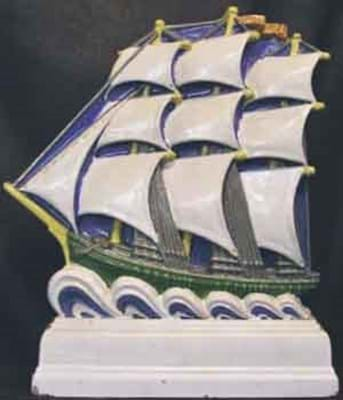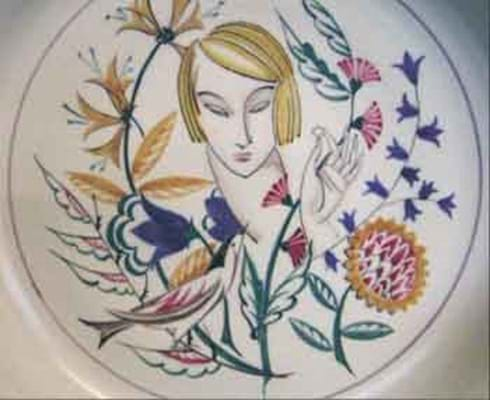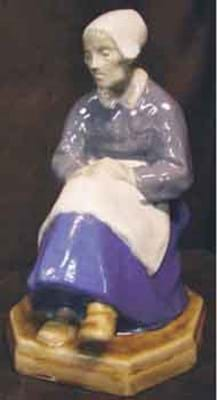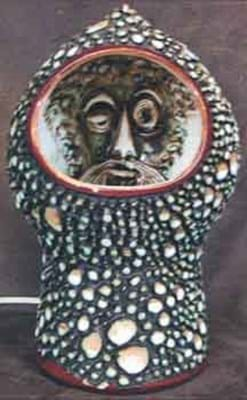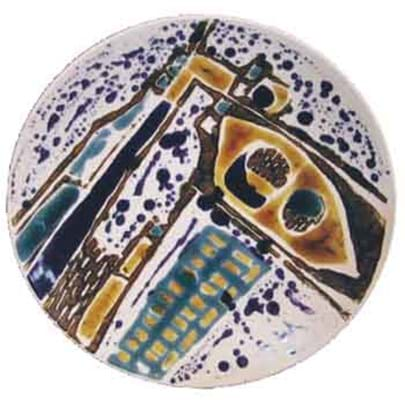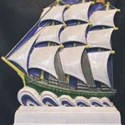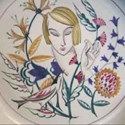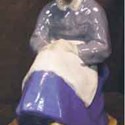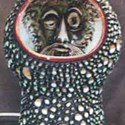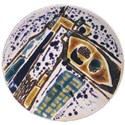The pottery has had a chequered history, but just six years ago, the future looked bright with the opening of the new Sopers Lane factory outside Poole. Even last year a million people visited the Poole Pottery Experience at Dolphin Quay but financial problems within the 123-year-old firm proved insurmountable.
The new owners are The Lifestyle Group, who also own tableware manufacturer Royal Stafford. Redundant factory workers are now awaiting the outcome of plans to re-launch the pottery.
In the meantime, the collectors' market has turned a few somersaults.
The Studio and Delphis wares of the 1960s have become the most coveted wares of a new collectors' club, called All About Poole Pottery.
One-off pieces by Robert Jefferson and Tony Morris have shot up over the last couple of years and continue to rise, although the record for one of the large chargers at the core of this range remains at £5200, bid for a c.1965 charger by Tony Morris at Rosebery's in November 2005.
As Studio and Delphis have risen, other areas have stabilised: the bigger pieces from Guy Sydenham's Atlantis range are popular, although smaller utilitarian pieces are less reliable.
Harold and Phoebe Stabler's designs have a steady following, while an established band of older collectors exists for Barbara Linley Adams's bird and animal figures.
Freeform wares of the 1950s still appeal to retro enthusiasts looking for quintessential post- War British design - although they are not as hot now as two years ago. However prices for the floral-decorated earthenwares of the 1920s and '30s have plummeted.
But generally, as Cottees' 90 per cent selling rate suggests, Poole retains a huge appeal for collectors with a limited budget. The lesser pieces in particular offer decent value for money, embodying, as they do, the craftsmanship and individuality of the master potters and a coterie of talented painters employed in Poole for over a century. Auctioneer John Condie was happy with the results for the April 28 sale.

Above: a collector beat off Poole Town Council to win this Poole Picardy Peasant woman by Phoebe Stabler which sold at £3600 at Cottees' sale devoted to the pottery.
Top price was £3600 bid for a Phoebe Stabler Picardy Peasant figure, which seemed realistically estimated at £1000-1500.
Phoebe Stabler designed the male and female pair of Picardy Peasants in 1911 at her studio in Hammersmith, long before she and her husband Harold joined Poole in 1921. She sold reproduction licenses to several potteries, the most prolific of which was Royal Doulton, who produced them in a number of colourways from 1913-38. However, this did not preclude production at Poole from 1922 until the early 1930s.
A good female Picardy Peasant would normally make around £2000. The reason that a collector had to go to £3600 against underbidders Poole Town Council was apparently a direct result of the closure of the pottery. Now that there is no longer a dedicated museum in the town, the town council plans to open an exhibition centre of Dorset ceramics in 2007-08 as part of the local museum. The council already had a male Picardy Peasant and it wanted his partner, but to no avail - the collector had deeper pockets.
The council did, however, go on to become one of the biggest buyers of the sale, bagging 25 lots. Its major purchase was an Olive Bourne charger, Sugar for the Birds, one of the designs based on female heads and figures she produced in 1926-27.
It was painted in the 1930s, (the painter's mark was indistinct) and the delicate, linear-style painting complemented the dainty features of the blonde flapper. The plate had failed to sell in the previous auction at £700 but this time, with the psychology of a lower £600-800 estimate, it sold easily at £900.
The Poole Pottery took inspiration from local hero Admiral Henry Paye - by repute an early 15th century pirate who became Commander of the Fleet of the Cinque Ports.
Among the lots on which he featured here was a large faience galleon by Harold Stabler (£1700) and a 15in (38cm) diameter ship dish inscribed to the front The Ship of Harry Paye, Poole, 1400and, to the reverse,This dish was made and painted at the Poole Pottery in the year 1937, ship drawn by Arthur Bradbury, painted by Ruth Paveley.
Poole specialities
Ship dishes, a Poole speciality, were mostly based on Bradbury's designs of the 1930s and those executed during that decade (they were still made up to the 1970s) are the most popular. This example, estimated at £500-800 sold to a private collector at £1000.
A thrown, carved and glazed Atlantis helmet lamp made between 1972-77 by master thrower and senior craftsman Guy Sydenham was estimated at £1500-1800. Lamps are the most eagerly collected of Sydenham's output. This example was thrown in the shape of a medieval knight's helmet with an opening which revealed the hollow interior decorated with the alarmed looking face of a knight peering out. It sold at £1600 to a dealer for his own private collection.
Another of the better Studio pieces on offer was a c.1963 charger by Tony Morris consigned by a woman who had bought it from a Winchester charity shop three years ago for £1.
The 11in (27.5cm) diameter dish was decorated in an abstract design in tones of blue, brown and yellow, signed TM in blue and impressedPoole Studioto the reverse. Mr Morris attended the view and identified the scene as a view of the Purbeck Hills with Poole Quay, Fisherman's Lock and the Poole Pottery in the foreground. Morris still works from his own studio (five of his non-Poole chargers from 1999 were sold at the auction for between £375 and £475) but this example of his early output took £1600 (estimate £400-600).

